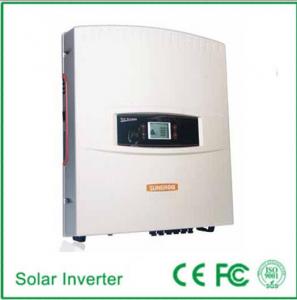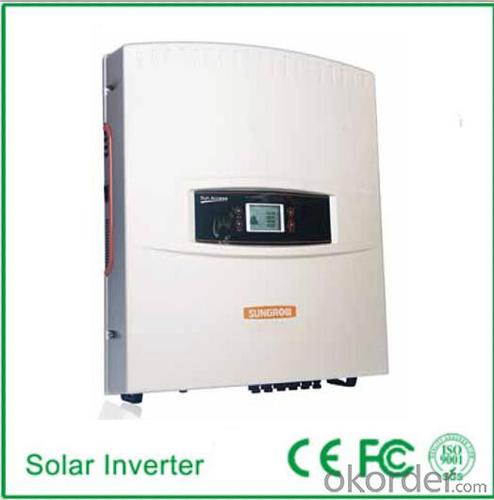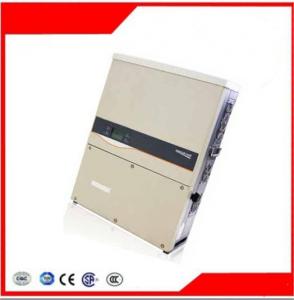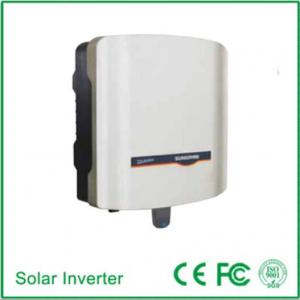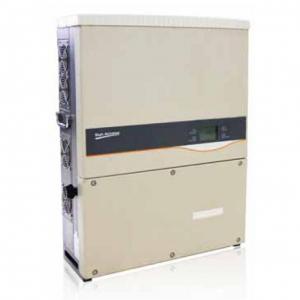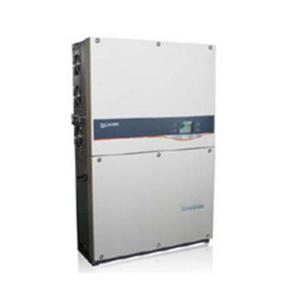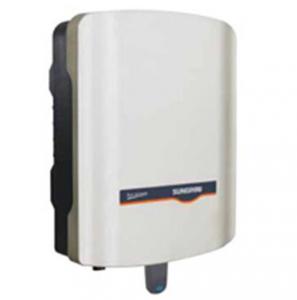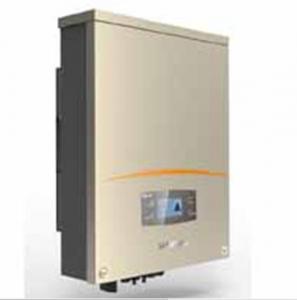Kaco Solar Inverter Photovoltaic On-Grid Connected Inverter SG20KTL
- Loading Port:
- China Main Port
- Payment Terms:
- TT or LC
- Min Order Qty:
- 500000 unit
- Supply Capability:
- 3000000 unit/month
OKorder Service Pledge
OKorder Financial Service
You Might Also Like
1. Structure of Solar Photovoltaic On-Grid Connected Inverter SG20KTL Description
A solar inverter, or PV inverter, or Solar converter, converts the variable direct current (DC) output of a photovoltaic (PV) solar panel into
autility frequency alternating current (AC) that can be fed into a commercial electrical grid or used by a local, off-grid electrical network.
It is acritical BOS–component in a photovoltaic system, allowing the use of ordinary AC-powered equipment. Solar inverters have
special functions adapted for use with photovoltaic arrays, including maximum power point tracking and anti-islanding protection.
Suitable for 50Hz/60Hz grid, could be used in Asia, Africa and Europe. Available for hand installation, no need for lifting machinery
assistance.
2. Main Features of the Photovoltaic On-Grid Connected Inverter SG20KTL
• Full 20 kW effective power at power factor of 0.9 due to apparent power reserves up to 22.2 kVA
• Photon test results "very good", with a maximum efficiency of 98% (Photon Profi 2-2012)
• Dual MPP trackers control
• Active power continuously adjustable (0~100%)
•Reactive power control with power factor 0.8 overexcited ~ 0.8 underexcited
•Includes RS-485 interface, compatible with all common monitoring systems
• Product certification: TÜV, CE, CEI 0-21, G59/2, AS4777, BDEW, VDE AR-N-4105, CGC, compliance with Italian medium voltage grid requirement
• Manufacturer certification: ISO 9001, ISO 14001, OHSAS 18000
3. Photovoltaic On-Grid Connected Inverter SG20KTL Images
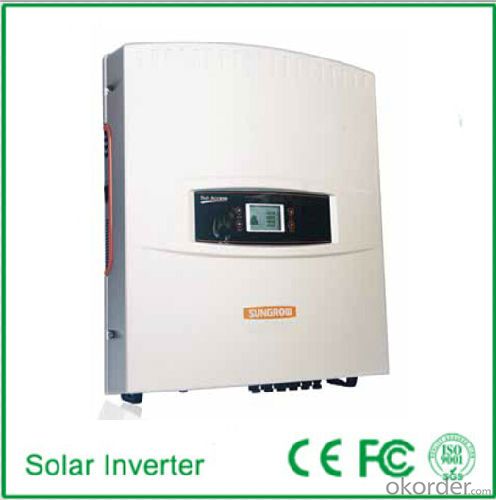
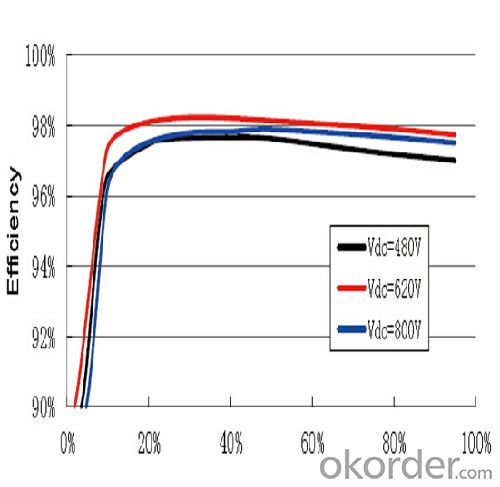
4. Photovoltaic On-Grid Connected Inverter SG20KTL Specification
Input Side Data | |
Max. PV input power | 21000W(10500W/10500W) |
Max. PV input voltage | 1000V |
Startup voltage | 300V |
Nominal input voltage | 620V |
MPP voltage range | 280~950V |
MPP voltage range for nominal power | 480~800V |
No. of MPPTs | 2 |
Max. number of PV strings per MPPT | 3 |
Max. PV input current | 42A(21A/21A) |
Max. current for input connector | 12A |
Output Side Data | |
Nominal AC output power | 20000W |
Max AC output power(PF=1) | 22200W |
Max. AC output apparent power | 22200VA |
Max. AC output current | 33A |
Nominal AC voltage | 3/N/PE, 230/400Vac |
AC voltage range | 310~480Vac |
Nominal grid frequency | 50Hz/60Hz |
Grid frequency range | 47~53Hz/57~63Hz |
THD | < 3 % (Nominal power) |
DC current injection | <0.5 %In |
Power factor | >0.99@default value at nominal power |
(adj. 0.8overexcited ~0.8underexited ) | |
Protection | |
Anti-islanding protection | Yes |
LVRT | Yes |
DC reverse connection protection | Yes |
AC short circuit protection | Yes |
Leakage current protection | Yes |
DC switch | Yes |
DC fuse | No |
Overvoltage protection | Varistors |
System Data | |
Max. efficiency | 98.00% |
Max. European efficiency | 97.30% |
Isolation method | Transformerless |
Ingress protection rating | IP65 |
Night power consumption | <1W |
Operating ambient temperature range | -25~60℃(>45℃ derating) |
Allowable relative humidity range | 0~100% |
Cooling method | Smart forced air cooling |
Max. operating altitude | 4000m (>3000m derating) |
Display | Graphic LCD |
Communication | RS485(RJ45 connector) |
DC connection type | MC4 |
AC connection type | Plug and play connector |
Certification | EN62109-1, EN62109-2, EN61000-6-2,EN61000-6-3, VDE0126-1-1, |
CEI 0-21, AS/NZS3100, AS4777.2, AS4777.3, | |
VDE-AR-N-4105, BDEW, CGC | |
Mechanical Data | |
Dimensions(W×H×D) | 648×686×246mm |
Mounting method | Wall bracket |
Weight | 55kg |
5. FAQ of Photovoltaic On-Grid Connected Inverter SG20KTL
Q1. What is the difference between inverter and solar inverter?
A1. Inverter only has AC inpput, but solar inverter both connect to AC input and solar panel, it saves more power.
Q2. What is the difference between MPPT&PWM?
A2. MPPT has higher efficiency, it can track the max power point and won't waste energy.
- Q: Can a solar inverter be connected to a battery storage system?
- Yes, a solar inverter can be connected to a battery storage system. This allows the excess energy generated by the solar panels to be stored in the battery for later use, providing backup power during times when the solar panels are not producing enough electricity.
- Q: Can a solar inverter be used in a ground-mounted solar system?
- Yes, a solar inverter can be used in a ground-mounted solar system. In fact, ground-mounted solar systems commonly utilize solar inverters to convert the direct current (DC) generated by the solar panels into alternating current (AC) that can be used to power homes or businesses or fed back into the electrical grid.
- Q: Can a solar inverter be used without solar panels?
- No, a solar inverter cannot be used without solar panels. Solar inverters are designed to convert the direct current (DC) electricity generated by solar panels into usable alternating current (AC) electricity for use in homes or businesses. Without solar panels generating electricity, there is no input for the inverter to convert, rendering it useless.
- Q: What is the role of MPPT (Maximum Power Point Tracking) in a solar inverter?
- The role of MPPT (Maximum Power Point Tracking) in a solar inverter is to optimize the efficiency and output of the solar panel system. MPPT technology enables the inverter to constantly track and adjust the operating point of the panels, ensuring that they are operating at their maximum power point, where the highest power output is achieved. This allows the system to capture the maximum amount of energy from the sun, maximizing the overall efficiency and performance of the solar inverter.
- Q: Are there any ongoing maintenance requirements for a solar inverter?
- Yes, there are ongoing maintenance requirements for a solar inverter. Regular cleaning of the solar panels to remove dust and debris is necessary to maintain optimal performance. Additionally, inspections and tests of the inverter's components, such as cables and connections, should be conducted periodically to ensure everything is functioning properly. Monitoring the inverter's performance and addressing any issues promptly is also crucial for long-term maintenance.
- Q: What are the main components of a solar inverter?
- The main components of a solar inverter include the DC to AC inverter, MPPT (Maximum Power Point Tracking) controller, safety features such as circuit breakers and fuses, and monitoring systems for performance tracking.
- Q: Can a solar inverter be used with building-integrated photovoltaics (BIPV)?
- Yes, a solar inverter can be used with building-integrated photovoltaics (BIPV). In fact, a solar inverter is an essential component of any BIPV system as it converts the direct current (DC) generated by the BIPV panels into alternating current (AC) that can be used to power electrical devices in a building or fed back into the grid.
- Q: Can a solar inverter be used with a three-phase electrical system?
- Yes, a solar inverter can be used with a three-phase electrical system. In fact, many solar inverters are designed to work with three-phase systems. These inverters are capable of converting the direct current (DC) generated by the solar panels into alternating current (AC) that can be used by the three-phase electrical system.
- Q: Can a solar inverter be used in conjunction with a wind turbine?
- Yes, a solar inverter can be used in conjunction with a wind turbine. Both solar and wind energy sources produce direct current (DC) electricity, which needs to be converted to alternating current (AC) for use in homes and businesses. A solar inverter is designed to convert DC electricity generated from solar panels into AC electricity, and it can also be utilized to convert the DC electricity generated by a wind turbine into usable AC electricity. By integrating a solar inverter, the electricity generated by both the solar panels and wind turbine can be synchronized and fed into the electrical grid or used directly on-site.
- Q: Can a solar inverter be used with solar-powered irrigation systems?
- Yes, a solar inverter can be used with solar-powered irrigation systems. A solar inverter is used to convert the direct current (DC) power generated by solar panels into alternating current (AC) power that can be used to operate electrical devices. In the case of solar-powered irrigation systems, the solar inverter would be used to convert the DC power produced by the solar panels into AC power to run the irrigation pumps and other electrical components of the system. This allows for efficient and sustainable operation of the irrigation system using solar energy.
Send your message to us
Kaco Solar Inverter Photovoltaic On-Grid Connected Inverter SG20KTL
- Loading Port:
- China Main Port
- Payment Terms:
- TT or LC
- Min Order Qty:
- 500000 unit
- Supply Capability:
- 3000000 unit/month
OKorder Service Pledge
OKorder Financial Service
Similar products
Hot products
Hot Searches
Related keywords
